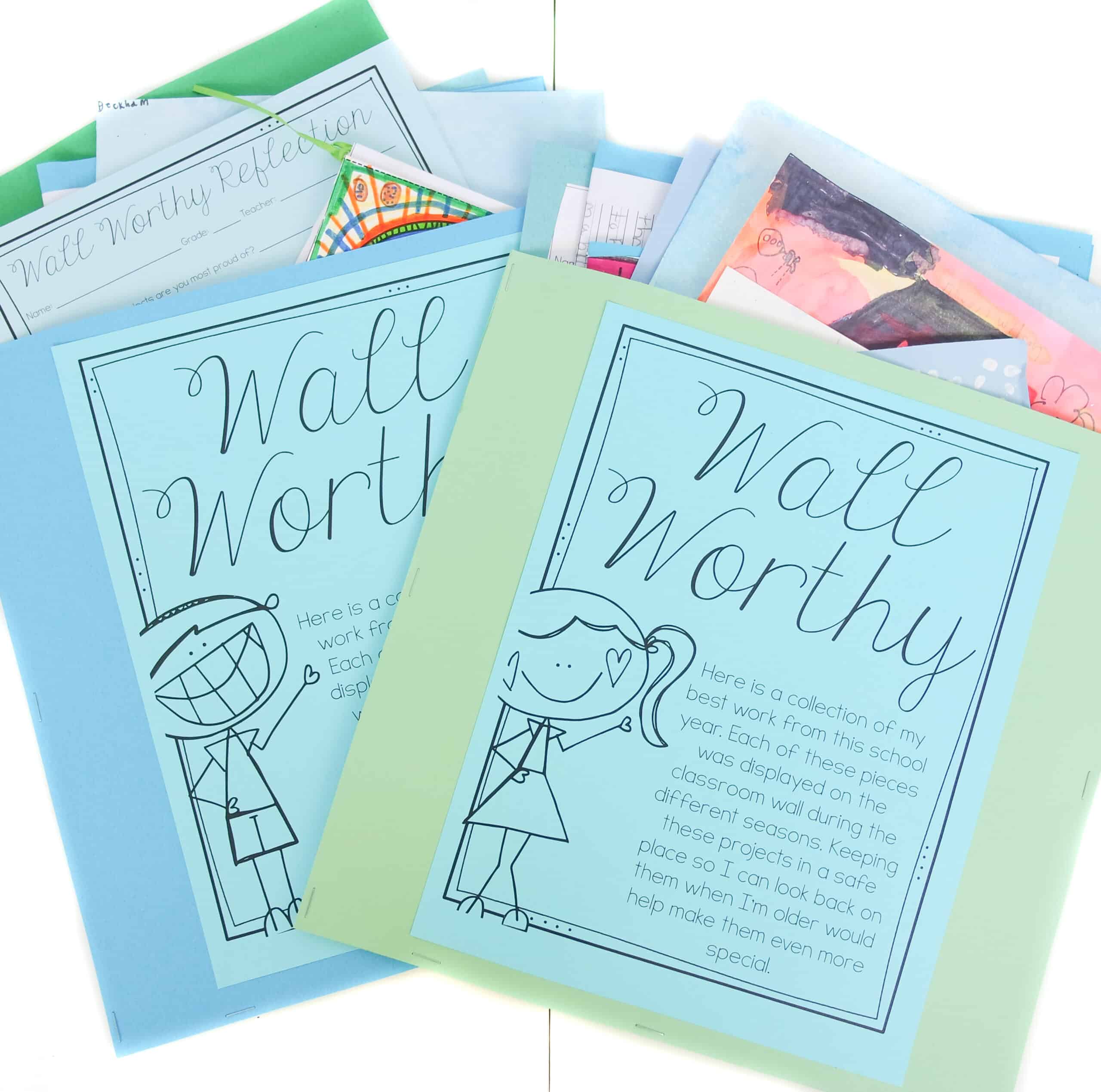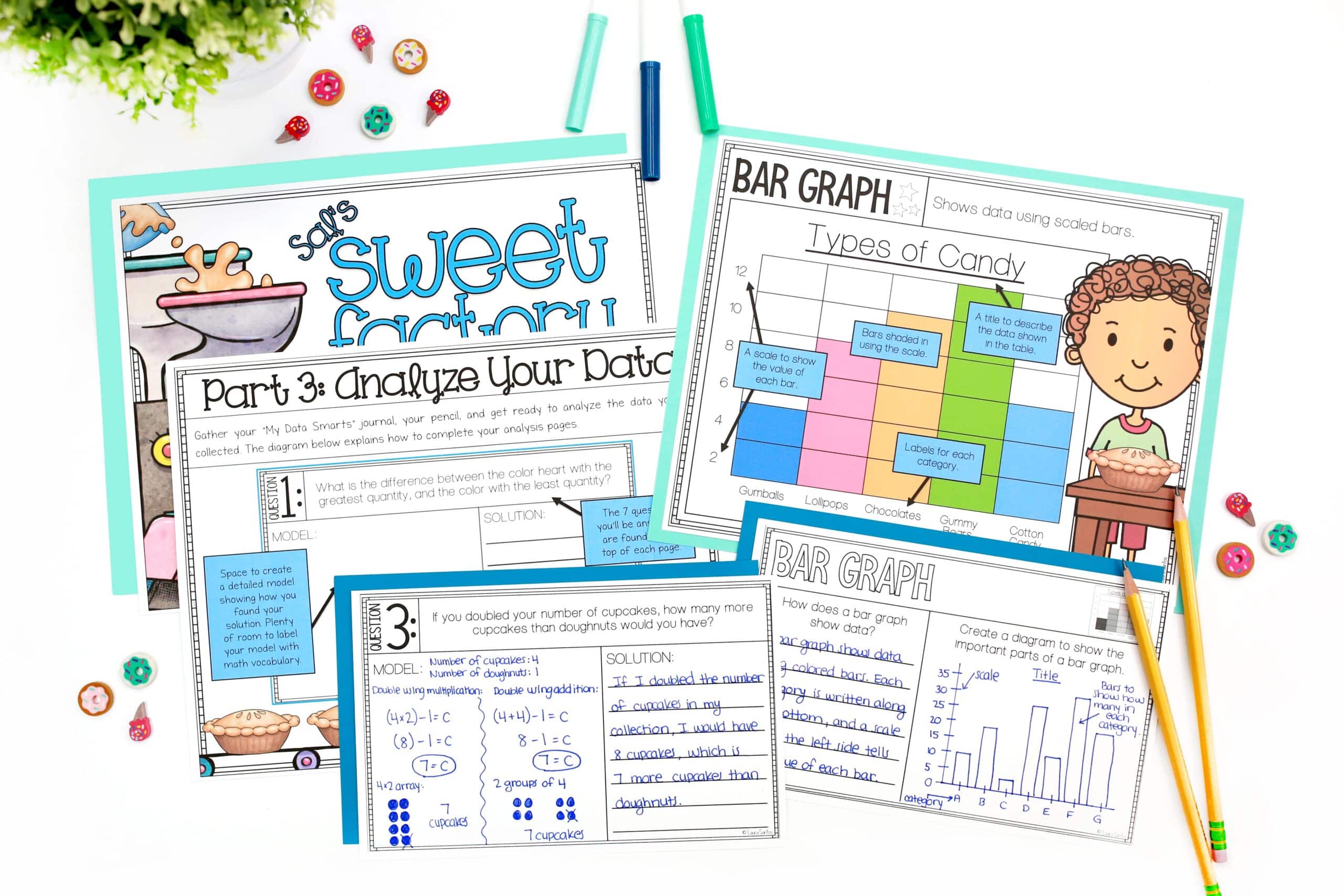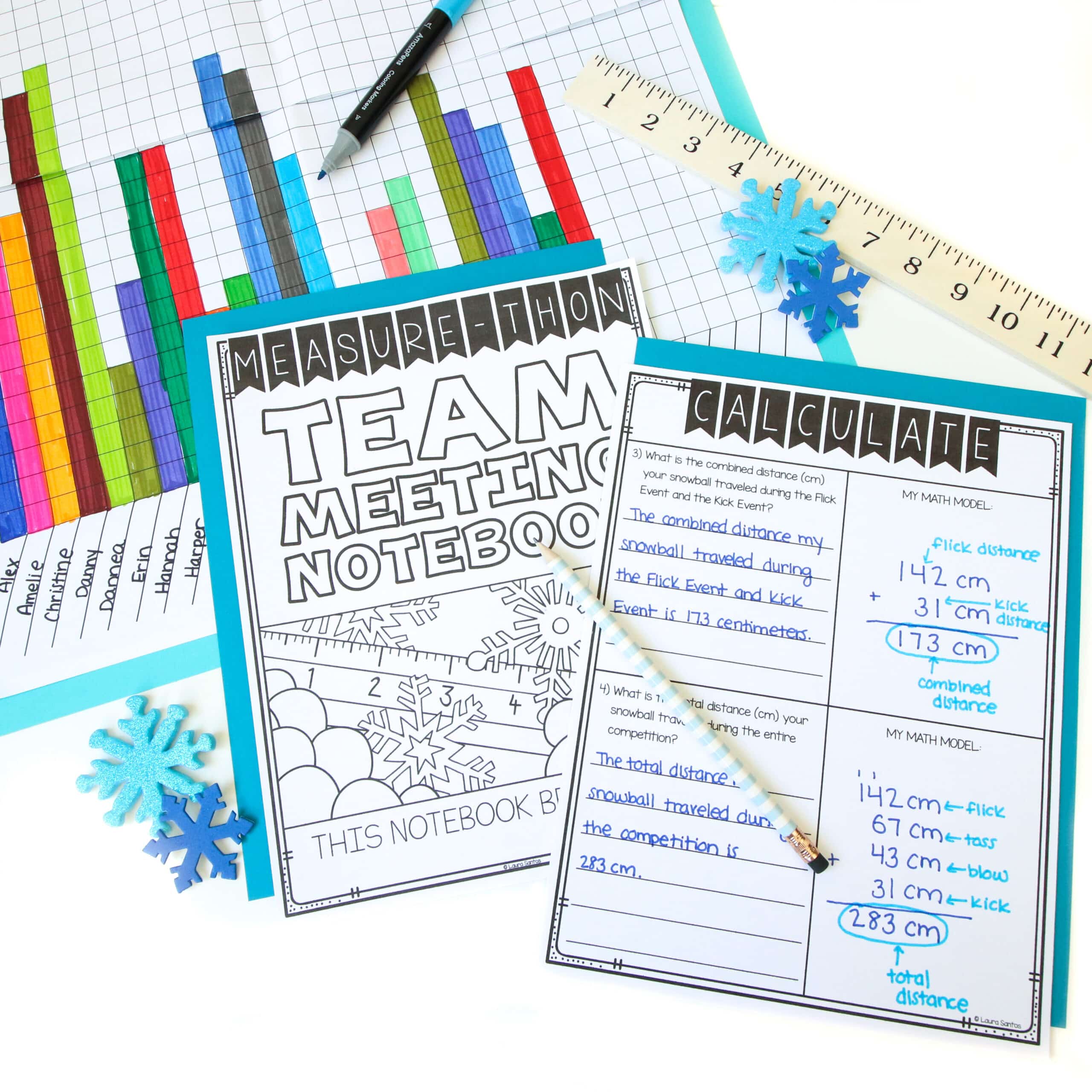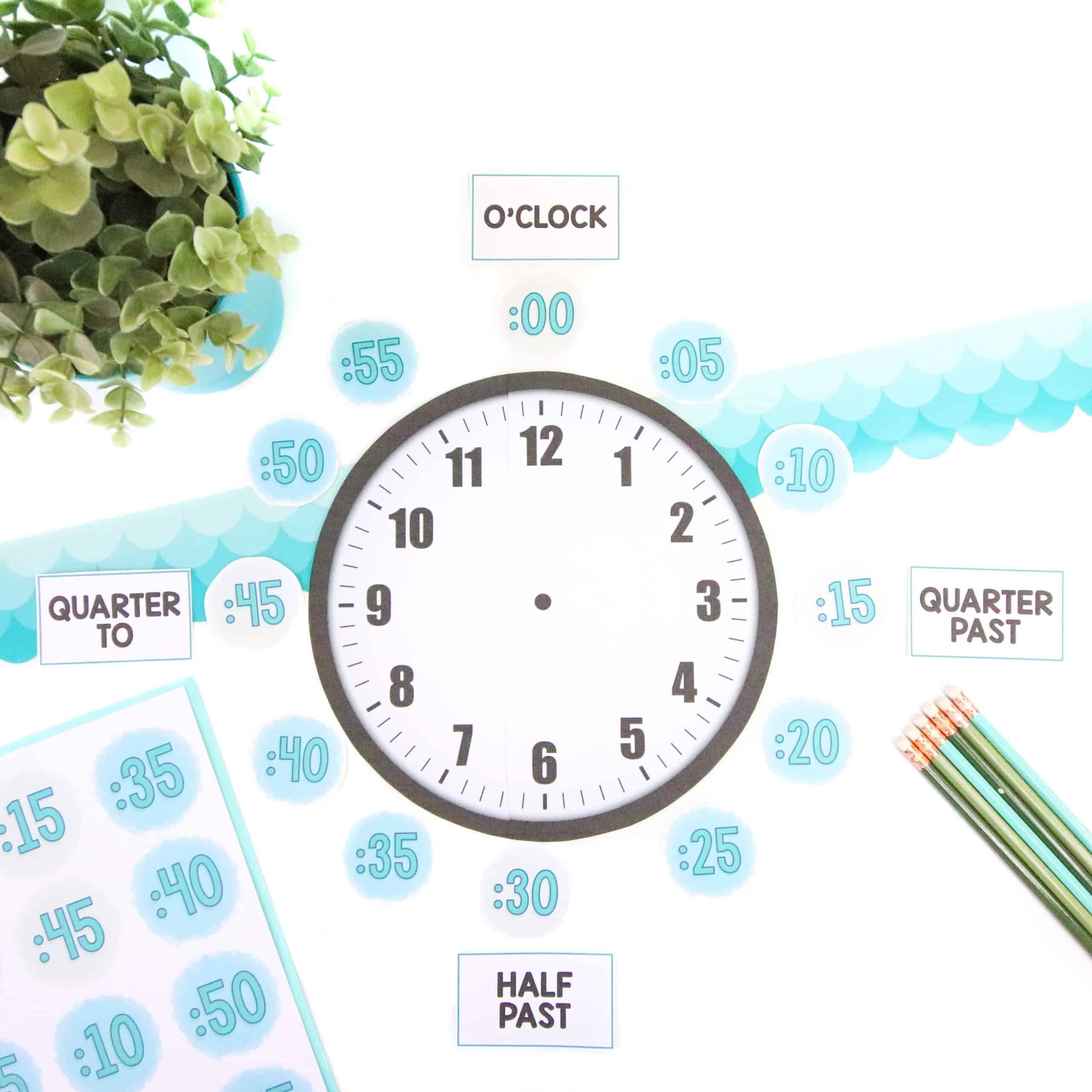During the summer months, one of the most common discussion topics in our Third Grade Teacher Facebook Group is focused around what a daily schedule in third grade looks like.
Although scheduling changes from year to year based on the ever-changing school environment, this post includes an outline of what my schedule has generally included over the past few years.
Schedule Background Notes
A few notes to keep in mind as you read this. I teach in the state of California at a public school. I teach all subjects and students do not rotate to other classrooms at any point in the day. I have around 25 students per year with no general ed classroom aides. My school currently has several specials – classes that provide enrichment to our students. With the exception of P.E. I attend these specials with my students because there must be a credentialed teacher present. The schedule for these specials is set at the beginning of the year, and stays consistent for each class for the duration of the year. These specials include:
- Music/Dance (30 minutes/week) – led by our music teacher
- Library (30 minutes/week) – led by our school librarian
- STEM (45 minutes/week) – co-taught with our STEM teacher
- P.E. (two 30 minute sessions/week with a credentialed teacher) – this is my prep time
Our specials are scattered throughout the week. On their designated day, they take the place of the “regularly” scheduled activities I have outlined below.
An Overview of Our Daily Schedule
- 8:10 – 8:30 Student arrival
- 8:30 – 8:35 School-wide flag assembly
- 8:35 – 8:50 Bellwork (Number of the Day Binder)
- 8:50 – 9:10 Morning Meeting (modified Responsive Classroom format)
- 9:10 – 10:10 Math Workshop (click here to read more)
- 10:10 – 10:30 Recess
- 10:30 – 11:30 Reading Workshop
- 11:30 – 11:50 Word Work (Words Their Way)
- 11:50 – 12:00 Homework and Lunch Prep
- 12:00 – 12:45 Lunch
- 12:45 – 1:05 Interactive Read Aloud
- 1:05 – 1:40 Writing Workshop
- 1:40 – 2:30 Science/Social Studies/Art
- 2:30 – 2:40 Tidy Up Time
- 2:40 – 2:50 Student pick up
A Detailed Look at Our Daily Schedule
Student Arrival
Our first school bell rings at 8:10, signaling that students are allowed to set their backpack at their designated spot on the blacktop and spend twenty minutes playing on the playground before school. During this time, there are teachers monitoring the blacktop, playground, and field as yard duties.
School-Wide Flag Salute Assembly
Each class lines up at their designated spot on the blacktop. Teachers come outside to greet their class, and the principal and student council president lead the school in the flag salute, followed by a few quick announcements. We are all dismissed to walk our students to our classroom where they hang their backpack on a hook outside, and line up to enter the room.
Bellwork (Number of the Day Binder)

Students enter the room quietly, turn in their homework using our Homework Drop Boxes, and begin working on their reusable Number of the Day Binder. This is a daily math spiral review routine, which I have written about in detail here. During this time, I greet students, check in homework, take attendance, and manage any unexpected to-dos that may arise each morning.
Morning Meeting
I have modified our morning meeting format from the traditional Responsive Classroom framework. Due to time restraints, our meeting format includes Schedule – Message – Greeting – Share, rather than the traditional Message – Greeting – Share – Game/Activity.
As students tuck their Number of the Day Binder away in their desk, I read through the schedule for the day, and answer any questions the students may have about our schedule. Students then direct their attention to the front of the room where the morning message is displayed. We read the message aloud together, then I invite them to the carpet area at the front of the room for our greeting and sharing. This is a time each day when we strengthen our class community and enjoy building relationships with one another.
Math Workshop
Each day during our math block, we use the Math Workshop framework. I have written about this framework in detail through a series of posts, which can be found here. Our math block begins with a 10-minute mini lesson, followed by 40 minutes of M.A.T.H. rotations (Meet with the teacher, At your seat, Technology, Hands on), and ends with a 5-10 minute share out.
Math Workshop typically concludes around 10:08 so our germinators have time to prepare the class for recess by dismissing one group at a time to get hand sanitizer, grab their snack from their backpack, and head up to the tables to eat. Students must prep for reading workshop by placing their book bin on their desk in order to be dismissed. This minimizes transition time when students return from recess.
Recess
Students eat their snack, then head out to the playground to run around and play. Once a week, teachers have yard duty at recess.
Reading Workshop
I use the third grade Lucy Calkins Units of Study for Teaching Reading to guide my instruction during Reading Workshop.
When students enter the room, they grab their Reader’s Toolkit (which includes their reading notebook, sticky notes, and a pencil), and take a seat on the carpet next to their Reading Buddy for our ten-minute mini lesson. The content of these lessons, and all the information written in their reading notebook is based on the lessons in the Lucy Calkins Units of Study.
When students demonstrate understanding of what has been introduced during the lesson each day, they are dismissed to work on their reading goal, which is directly connected to the lesson. During this time, I pull small groups and have one-on-one conferences with my readers to help them work toward their next level of understanding. This portion of workshop lasts for approximately 30-40 minutes.
Reading workshop concludes with a share session, which allows students to reflect on their learning for that day, and make plans for growth the following day. For more information about the approach I use to teach reading, please visit Heinneman’s website for reading workshop.
Word Work
Each day, students engage in 10-20 minutes of word work practice using the Words Their Way Program. Depending on my class each year, I have anywhere from 3-6 differentiated word work groups that study different sorts from the Words Their Way books each week. The activity we complete each day differs:
- Monday – introduce sorts to individual groups
- Tuesday – Sort and write
- Wednesday – Speed sort
- Thursday – Partner sort and practice test
- Friday – Sort, glue, and final test
To read specific details about our daily word work routines, click here.
Homework and Lunch Prep
Students record their homework for the day in their planner, gather their homework supplies, and place their homework folder on their desk. Our germinators have time to prepare the class for recess by dismissing one group at a time to grab their homework folder, get hand sanitizer, tuck their homework into their backpack, and grab their lunch from their backpack (or get their lunch sticker from our lunch monitor), and head up to the tables to eat. I double-check that each student has their homework in hand as they walk out the door.
Lunch
Students eat their lunch, then head out to the playground to run around and play.
Interactive Read Aloud
Students enter to room, and take a seat on the carpet in our group meeting area for our daily read aloud. Throughout the read aloud, I pause to incorporate quick comprehension activities and questions that align with the reading skills we are currently focused on during reading workshop.
Writing Workshop
I use the third grade Lucy Calkins Units of Study for Teaching Writing to guide my instruction during Writing Workshop.
After read aloud, students grab their Writer’s Notebook and take a seat on the carpet for our ten-minute mini lesson. The content of these lessons and all the writing they add to their notebook is based on the lessons in the Lucy Calkins Units of Study.
When students demonstrate understanding of what has been introduced during the lesson that day, they are dismissed to work on their writing goal, which is directly connected to the lesson. During this time, I pull small groups and have one-on-one conferences with my writers to help them make progress toward their goal. This portion of workshop lasts for approximately 20-25 minutes.
Writing workshop concludes with a share session, which allows students to reflect on their learning and practice for that day and read their writing aloud to a buddy. For more information about the approach I use to teach writing, please visit Heinneman’s website for writing workshop.
Science/Social Studies/Art
Our final block of learning is our most flexible time of day. I alternate between teaching science and social studies, and sprinkle art into our afternoon schedule as often as possible. Each science or social studies unit lasts for approximately one month and is typically centered around project based learning.
Tidy Up Time
The final ten minutes of our day are spent working together to get the classroom fresh and ready for a new day of learning. This is a time when students complete their class jobs while they enjoy a little dancing and socializing.
I usually blast the songs we are practicing for our music class while the students complete their jobs. Students know to listen for a specific part at the end of one of our songs as their signal to take a silent seat so they can be dismissed by our dismissal team. Students are expected to tuck their chair in, and bring their jacket and water bottle home with them each day.
Consistent Schedules Foster Focus
Over the years, I have found creating a consistent schedule that is clearly displayed on the board, reviewed at the beginning of each day, and followed as closely as possible is helpful to the unique learners in my classroom. This predictable approach to the school day helps my students stay calm and focused throughout the week.
Of course, there are always times when unexpected schedule changes take place. If this occurs, we embrace it as a learning moment, focus on going with the flow, and rebound & refocus after these unexpected changes quickly because we know a return to normalcy is right around the corner.
Do you use a consistent daily schedule in your classroom? I would love for you to share your schedule-related thoughts and questions in the comments below.







11 Responses
Hi Laura! Love your room and way of organizing your classroom! I was wondering where you got the leaves around your “schedule” picture, where you got the “schedule” word print out, your hand signal posters, and if you are planning on putting your new mountain labels in your TpT store?
Thank you ! 🙂
Hi Kendra, thank you! I got the leaves from Carson Delossa. The schedule letters are from Creative Teaching Press. The hand signal posters are something I whipped up real quick. If you shoot me an email, I’m happy to send them your way. 🙂 Here is the link to the mountain labels…they are now posted!!! 🙂
Warmly,
Laura
Hi Laura. I am loving your organization and the resources you are sharing. Thank you! I am wondering about the blue strips you have on your schedule. Are those magnets? Paper? Paper on magnets? 🙂
Thank You,
Delanie
Hi Delanie, happy to hear you are loving the resources. 🙂 The blue schedule strips are cardstock that has been laminated with magnet circles on the back.
Warmly,
Laura
Hello,
I have really enjoyed following many of your posts. You are truly inspirational. My question is about your Bell Work time; What is the behavior expectation for your students during this time? Are they to remain seated? What is the volume like? Do students tend to be very chatty at this time?
Thank you!
Hi Michelle, thank you for the kind comment.
During bellwork, the expectation is for students to enter the room silently and begin working silently. We use flexible seating in my classroom, so students are always welcome to work where they feel comfortable but every year so far, they all prefer to work at their desks during bellwork. When they finish, they move into their silent choices while other continue to focus on finishing: books hop, read, journal, finish work in progress, or fill out applications for class jobs. We talk a lot at the beginning of the year about the importance of starting the day on the right foot, respecting others’ think time, and calming preparing for a successful day so bellwork becomes a very calm time.
This year, I’ve implemented a new routine..I have students complete four binder pages, then silently tap their head to signal to me they have finished and would like me to check their work for accuracy. I come over, check their work, then move on as they erase their pages and tuck their binder away before moving into their choices. I find this helps me keep a better tab on how well students are understanding these spiral review concepts.
I hope this explanation provides some insight. 🙂
Warmly,
Laura
Hi Laura! Are you still willing to e-mail the hand signal posters? Thanks!
Hi Laura-
I will begin teaching 5th grade next year as a new teacher (at 45 years old!). I just discovered your blog and absolutely love the simplicity, organization and peaceful vibe of your room. Thank you SO much for being so detailed with your descriptions- it has helped tremendously. I had a question- did you make the schedule signs (EX: BELLWORK, ART, LUNCH, READ ALOUD, etc) and what font is it?
Hi Laura,
Firstly I want to say that your blog is a Godsend! It serves as my daily dose of inspiration. I am a teacher in Australia and I am on my 4th year of teaching. I love reading about everything that you do in your classroom. I have bought many of the resources you have and adapted it to our school curriculum – and the kids absolutely enjoy using them (as do I). I would really love to read more about what you do during your writing workshop. How you might run it or what students do during this time.
Thank you so much for sharing your blog.
Hi Janelle! Thank you so much for the kind note. Reading your message made my day. 🙂 I appreciate you sharing your interest in how I run writing workshop. I am currently transitioning to a new curriculum at my school and it feel pretty cumbersome at the moment, but I will be sure to share as much as I can. I do tend to share more about that through Instagram stories since it’s a major work in progress. 🙂
Warmly,
Laura
Your ideas are amazing! I love the calming colors of green and blue! Thank you for sharing all your ideas.